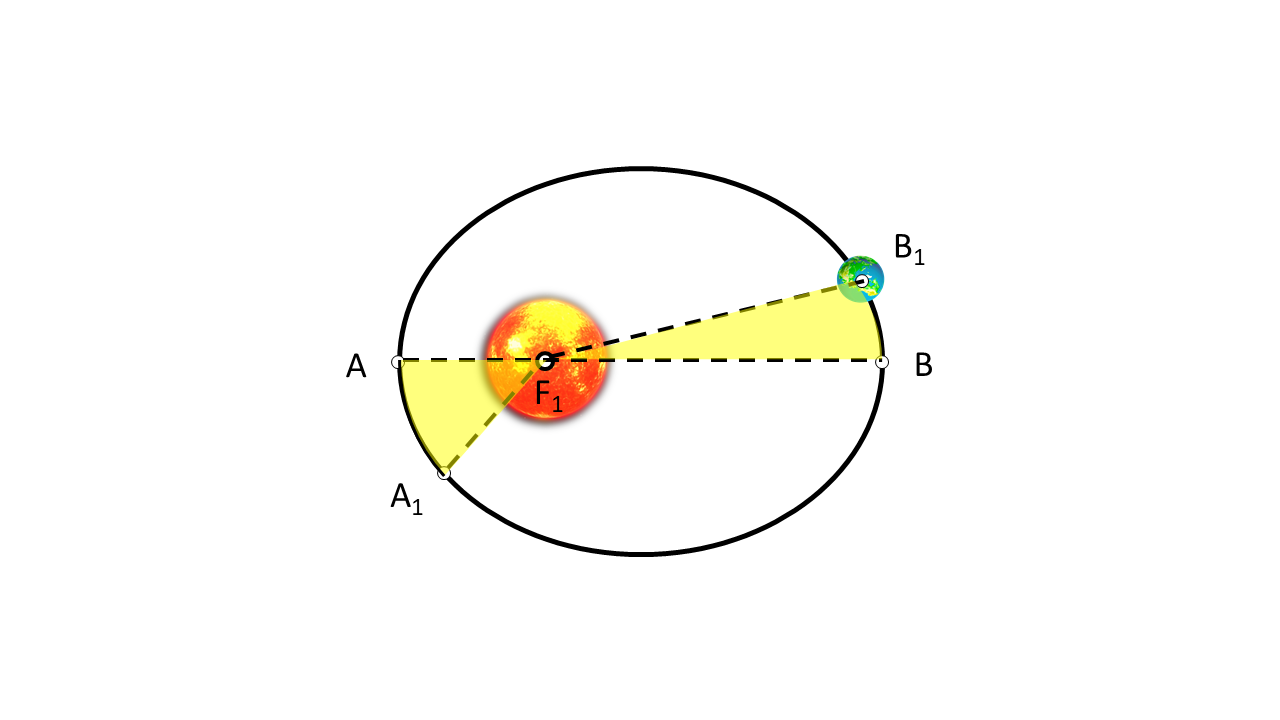In the early 17th century, German astronomer and mathematician Johannes Kepler postulated three laws for the motion of planets in the solar system. His first law states that all planets orbit the Sun in an elliptical orbit, with the Sun at one of the ellipse's foci. Therefore, the distance of a planet from the Sun varies throughout its revolution around the Sun.
While in an elliptical orbit, the total energy of the planet is conserved. Therefore, the planet slows down when it is at apogee and speeds up when it is at perigee. These conclusions led Kepler to state his second law, that the radius vector of the planet sweeps out in equal areas in equal time. This means that if a planet takes the same time to travel from A to A1, and then from B to B1, then the areas AF1A1 and BF1B1 are equal, as shown in Figure 1.

Since the area is constant in a given time interval, the planet's sector velocity remains constant. Since the sector velocity is proportional to the planet's angular momentum, Kepler’s second law implies that the angular momentum of a planet in an elliptical orbit is conserved.
This text is adapted from Openstax, University Physics Volume 1, Section 13.5 Kepler’s Laws of Motion.
From Chapter 14:

Now Playing
14.16 : Kepler's Second Law of Planetary Motion
Gravitation
3.8K Views

14.1 : Gravitation
Gravitation
5.5K Views

14.2 : Newton's Law of Gravitation
Gravitation
8.5K Views

14.3 : Gravitation Between Spherically Symmetric Masses
Gravitation
679 Views

14.4 : Gravity between Spherical Bodies
Gravitation
7.6K Views

14.5 : Reduced Mass Coordinates: Isolated Two-body Problem
Gravitation
979 Views

14.6 : Acceleration due to Gravity on Earth
Gravitation
9.8K Views

14.7 : Acceleration due to Gravity on Other Planets
Gravitation
3.9K Views

14.8 : Apparent Weight and the Earth's Rotation
Gravitation
3.4K Views

14.9 : Variation in Acceleration due to Gravity near the Earth's Surface
Gravitation
2.2K Views

14.10 : Potential Energy due to Gravitation
Gravitation
2.2K Views

14.11 : The Principle of Superposition and the Gravitational Field
Gravitation
947 Views

14.12 : Escape Velocity
Gravitation
2.0K Views

14.13 : Circular Orbits and Critical Velocity for Satellites
Gravitation
2.7K Views

14.14 : Energy of a Satellite in a Circular Orbit
Gravitation
2.0K Views
See More
ABOUT JoVE
Copyright © 2025 MyJoVE Corporation. All rights reserved